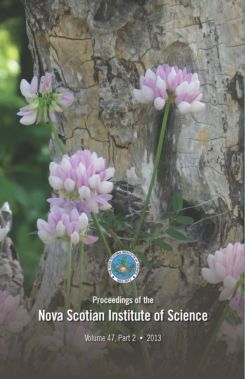Coronilla varia L. (Fabaceae): AN INVADER OF A COASTAL BARRIER BEACH IN NOVA SCOTIA, CANADA
DOI:
https://doi.org/10.15273/pnsis.v47i2.4339Abstract
C
Coronilla varia L. (crown vetch) is described as an invasive plant on a coastal sand dune system (Mahoneys Beach) in Nova Scotia facing the southern Gulf of St. Lawrence. This is the first time that C. varia has been shown as invasive in Atlantic Canada, and the first time it has been characterized as invasive on coastal sand dunes. Accordingly, colonies of C. varia forming more than 90% of the plant cover occupy 8% of the total dune system and account for 32% of the area in the vegetation zone where C. varia has become abundant. C. varia can achieve high percentage cover, with all of the major dune plants, i.e., Ammophila breviligulata, Lathyrus japonicus, Toxicodendron radicans and Myrica pensylvanica. Where C. varia achieves maximum abundance (i.e., >80% cover and ca. 200 shoots m2), it has seemingly replaced A. breviligulata and L. japonicus. We do not know when C. varia first colonized Mahoneys Beach, but conspicuous colonies were recorded there by 2005, and a colony was found on the adjacent dune system (Dunns Beach) for the first time in 2010.
Key Words: Coronilla varia, crown vetch, Fabaceae, invasive species, Nova Scotia, sand dunes


